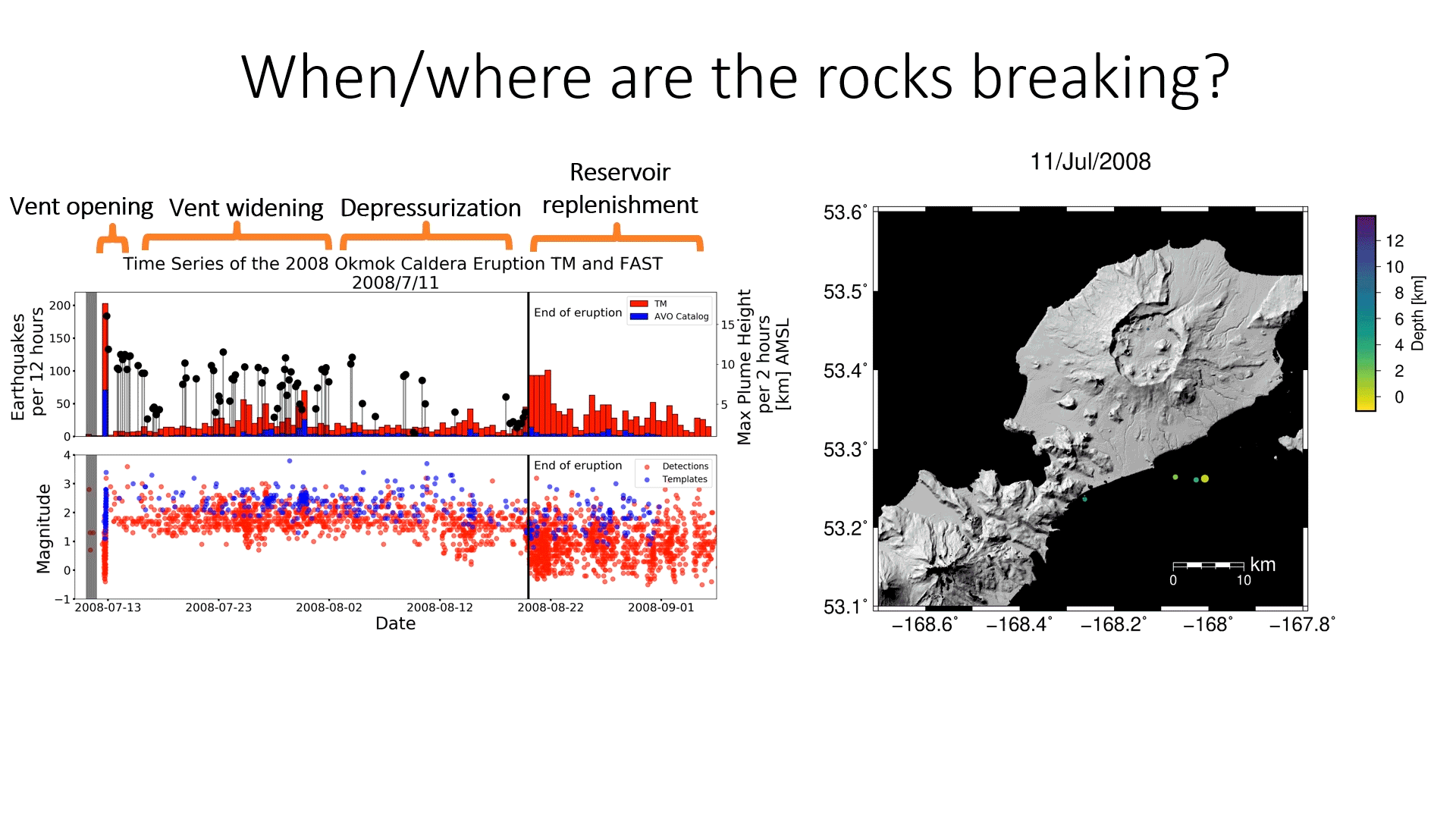The hidden earthquakes of the 2008 Okmok caldera eruption show dynamic opening and closing of the system
Garza-Giron, R., Brodsky, E., Spica, Z. and Haney, M.
WORK IN PROGRESS

We have performed an exhaustive search for earthquakes that are "hidding" in the continuous seismic data of a large volcanic eruption by using both supervised and unsupervised searching algorithms.
The motivation for this project is the need to better understand the response of the solid medium to the rapid changes in the stress-field durting large volcanic eruptions. This is important because it helps us understand the patterns of physical processes that the volcanic ediffices undergo when an euption is ongoing and it puts us in a better possition to say if the eruption will keep evolving or if it is going to stop or what is actually happening inside of the volcano.
The search for hidden earthquakes in the data is analogous to using an app to find your favorite song: You click the button and the waveform produced by the sound system playing your song is sent to a searching algorithm that, in a very efficient way, finds the best match. In our case, we used the waveforms of the pre-existing earthquakes during the eruption to search for new ones that look alike (supervised) and also we searched the whole data base to find brand-new earthquakes (unsupervised). For the supervised search, we used the Template Matching method based on routines from the EQcorrscan Python package (Chamberlain et al., 2014) and for the unsupervised search we applied the FAST (Fingerprinting and Similarity Thresholding) algorithm (Yoon et al., 2015)
Besides this, we developed a code that performs a linear inversion to retrieve the attenuation relationship pertaining to the Okmok-Makushin-Akutan seismic network calibrated during the eruptive period to be able to calculate the correct local magnitude of the earthquakes that we have.
We are starting to get very interesting results about the development of the eruption including a clog and crack dynamic of closing and opening the system using earthquakes and also the seismic response of the different stages of the eruption which is closely related to the different structures that define the anatomy of Okmok and Unmak island...STAY TUNED FOR OUR PAPER COMING UP SOON!